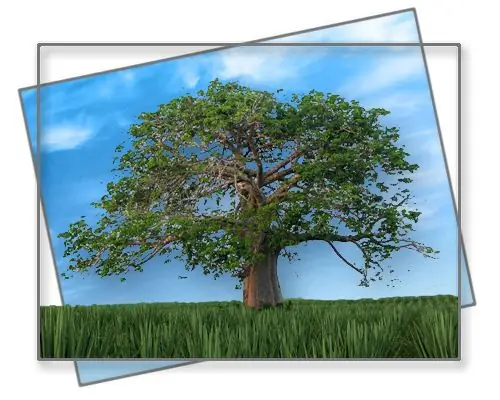The large number of layers that arise in the process of creating a complex composition in Adobe Photoshop is sometimes a big hindrance to the designer. This leads to a decrease in the productivity of his work, because it is easy to get confused in them. In addition, a large number of layers increases the size of the file, which requires additional computer resources, which, at times, are already sorely lacking. Salvation in such situations is the operation of merging together those layers of the composition, the work on which has already been completed.

Instructions
Step 1
First of all, it must be remembered that as the creation of each new layer expands the possibilities for working with the image, so destruction and merging of several layers irrevocably deprives you of certain possibilities: independent editing of fragments or individual parameters of each layer now becomes impossible. Therefore, each time carrying out such an operation, the designer must be 100% sure that the work on each of the merged layers is finished forever, and in the future he will not have to spend time again to re-divide or re-render the merged layers for some reason, moreover, that sometimes it is technically impossible to implement in any way.
Step 2
Nevertheless, if the operation still needs to be performed, the Photoshop program provides several ways to implement it. The differences between these methods are mainly in how the layers to be merged can be selected. In the most general form, the operation is carried out as follows: in the list of layers, two or more lines with the names of the layers are highlighted. For selection, the standard, accepted in most interfaces, are used, the Ctrl keys - to add or remove single layers from the selection, or Shift - to select a set of elements when pointing to the first and last in their row. Having selected several lines with layers, through the context menu (it is called by clicking on the right mouse button) or through the main Layer menu, select the Merge Layers command. As a result, instead of several layers, those that were marked in the list, one will appear - the product of the merging of the original ones.
Step 3
You can deliberately not select the lines in the list of layers, but merge directly what is now visible in the workspace of the composition. That is, if any layers in the composition are turned off (the icon with a symbolic image of an eye opposite these layers is off, that is, they are not visible at the moment), then after the merge operation they will remain intact, each will continue to remain in its place in the list of layers. Sometimes this is convenient because the designer has a visual confirmation of which layers will now be merged - exactly those that are directly in front of his eyes. In this case, any of these layers can be selected in the list of layers, and an adjacent command from the same menu can be applied - Merge Visible.
Step 4
If the layers were collected in a group, then for this case, the Photoshop program has a convenient function - you can convert the entire group into a single layer. Thus, all layers inside the group folder will be merged without any additional manipulations: select the required group in the list of layers and use the Merge Group command from the context menu. The group disappears, and a new layer appears in its place in the layer list, containing the result of merging the contents of the former group.
Step 5
There is also the most radical way to merge layers in Photoshop - the Flatten Image command. The use of this command, frankly, is rarely justified. It explicitly destroys all the technical stages of working on an image - layers, masks, transparency parameters, etc. Why should a designer destroy all his technical developments, on which hours of work with a specific image were spent - remains a mystery. Unless the task was very simple, the operations were elementary and, in fact, no technical constructions were carried out. In all other cases, the Flatten Image operation is, frankly, monstrous. For some reason, many novice designers believe that it is absolutely necessary in order to save the final file with a single image without layers, but they are wrong. The Photoshop program has a Save As command, when selected, the user has an additional setting option, where you can specify whether to save information about layers to a file or not. Thus, it is as easy as shelling pears to save a "lightweight" file intended for exchange with a customer or transfer over the network (usually a JPEG file), without doing any special merging of the layers of the original composition. The file with all the layers and settings in the "native" Photoshop format (PSD) must be saved separately, because, as experience shows, sooner or later you have to go back to editing an image, especially when it comes to a complex composition, even after how the customer was satisfied and the work is officially accepted. The most offensive thing in such situations is that the designer pays with his expensive time for his own arrogance: if he hadn’t clicked the once notorious Flatten Image, and a new fix would take only a few minutes, after merging all the layers, he would have to do hard labor again, count from scratch.






